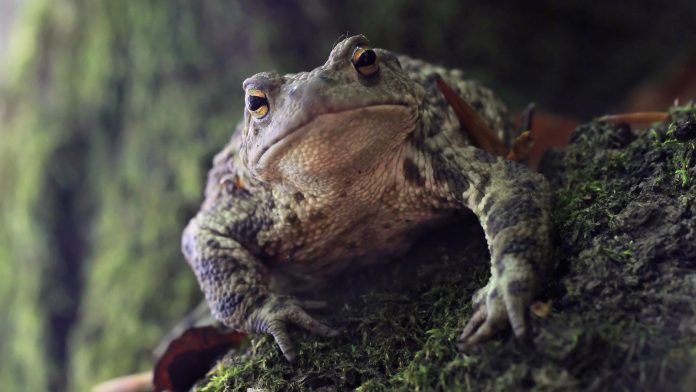Investigating emerging pathogens in amphibians and reptiles at the Centre for Fish and Wildlife Health of the University of Bern in collaboration with info fauna – karch: an example of a successful interdisciplinary collaboration.
Among vertebrates, amphibians and reptiles are neglected species which are facing unprecedented decline all around the world. These taxa are considered to be amongst the most threatened by the International Union for Conservation of Nature (IUCN). In addition to habitat loss, pollution, overharvesting, and climate change, infectious diseases have been recognised as relevant stressors, which have contributed to the local extirpation of many species of amphibians. Similarly, a number of infectious agents are emerging in reptiles.
Novel infectious agents in free-ranging amphibians and reptiles
The Centre for Fish and Wildlife Health (FIWI) at the University of Bern is at the frontline in the detection and characterisation of novel infectious agents in free-ranging amphibians and reptiles in partnership with info fauna – karch, the Swiss amphibian and reptile conservation programme. Thanks to this collaboration, two new viral agents have been recently discovered in amphibians.
More specifically, Ranid herpesvirus 3 (RaHV3) and Bufonid herpesvirus 1 (BfHV1) have been detected in common frogs (Rana temporaria) and common toads (Bufo bufo). These two viruses are both associated with a proliferative skin disease, characterised by elevated skin patches, which are distributed around the entire integument. The disease is observed at the beginning of the spring, during the mating season and it appears to recur each year, although not systematically. The actual impact of these viruses on their respective hosts and the clinical relevance of the associated disease still need to be clarified, however, considering the major physiological role that the skin has in amphibians, it cannot be ruled out that it may negatively affect frog survival. The spreading of the virus from infected individuals to uninfected ones is also not clear and transmission studies will be instrumental in clarifying this.
The discovery of two new viral agents in a very limited timespan is likely suggestive of the presence of several other agents in addition to those better characterised in amphibians, such as chytrid fungi and Ranavirus. Interestingly, following the publication of the original articles, several colleagues have informally reported about the presence of the same disease in several European countries, where it had been observed but never studied in detail. Accordingly, several other, and potentially relevant, infectious agents of amphibians are likely yet to be discovered and characterised.
Emerging diseases in reptiles
Similarly, the same approach is also rewarding the investigation of emerging diseases in reptiles. Of particular interest here is the increasingly common detection of a fungal pathogen in free-ranging snakes. This fungus, named Ophidiomyces ophidiiocola, has been documented in both USA and Europe. It can have a devastating impact on the infected snakes with the development of severe dermatitis, followed by a systemic spread. This agent has recently been detected in Switzerland (Ticino), however, its distribution within the whole country is not known and, similarly, it is not yet clear if it could have an impact on the population dynamics, especially on semi-aquatic snake species, where it seems to be more frequently detected.
The FIWI is also monitoring the health and presence of selected putative pathogens in European pond turtles (Emys orbicularis). Of particular interest here is understanding the clinical relevance of these agents in free-ranging turtles, as this would have a critical impact for the successful reintroduction of European pond turtles in the wild.
These investigations and results have been made possible thanks to a close collaboration between two institutes (FIWI and info fauna – Karch) and different professional figures, including biologists, volunteer naturalists, and veterinarians. These institutes and professionals have been complementary in this success story and we consider it as a model for disease ecology investigation.
Info fauna – karch contributors
Benedikt R. Schmidt
(Also at Department of Evolutionary Biology and Environmental Studies, University of Zurich).
Sylvain Ursenbacher
(Also at Department of Environmental Sciences, University of Basel).
www.karch.ch
Francesco C Origgi
Centre for Fish and Wildlife Health (FIWI)
University of Bern
+41 31 63124443
francesco.origgi@vetsuisse.unibe.ch
Tweet @fiwibern
www.fiwi.vetsuisse.unibe.ch/index_eng.html
Please note, this article will also appear in the third edition of our new quarterly publication.








